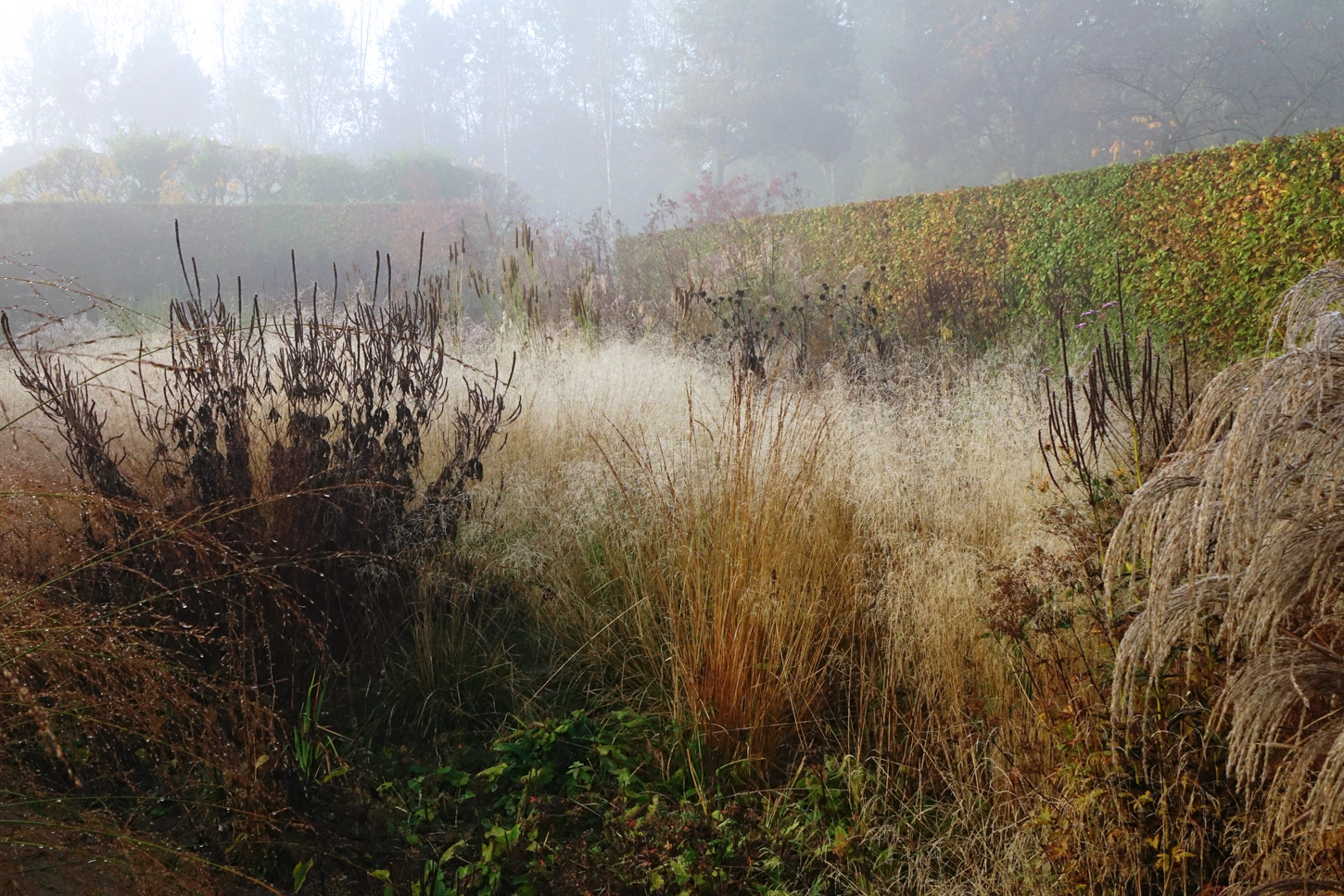Boo! It’s that time of year again when pagan festivals, monster horror films, and religious holidays all converge into an unholy clash.
From Hallowe’en to Night of the Living Dead to El Dia de Muerte, there’s something sweetly macabre about our autumnal obsession to summon forth the denizens of the spirit world and celebrate the enigma of life beyond the grave.


With all this morbidity sanctifying the air, it makes me wonder: What about our gardens? Do they really die each year? Or is it more like a form of reincarnation?
Either way, in autumn it seems The End Times are upon us. From the New Perennial perspective, it’s a state of pure rapture.

The Afterlife
A dark wind rattles the seedhead clusters perched atop the detritus of spikes, plumes, umbellifers and daisies. Bit by bit, the seeds now clasped into tiny perfect vessels of life, shake to slip loose into the catacombs of earth – or be pecked at by migrant birds.
Leaves crackle and crisp into an earth-muted palette of straw into gold, russet into cinder-black. The late grasses shimmer in curtains of northern light flagged by ghostly tassels of silver and bronze. Now drained of brighter hues, the deeper structures of the planting emerge: a boneyard of skeletons sway and collide like freeform organic sculpture.


The spiders desert their webs to find refuge from the slashing rain.
Meanwhile in the great upstairs, the mercurial forests light up in a spectrum of autumnal fire – burning copper, orange, scarlet and yellow before blanketing the ground in a collage of leaves.


Like a death star, everything moves closer to the brink of implosion. And it seems to me that everything within the garden is made more beautiful by its proximity to death and whatever lies beyond. A high regard for this elegant state of decline is a hallmark of the New Perennial Movement. Indeed, gardeners like myself embrace it.
In the lovely wreckage, perhaps we see our own mortality in a different light?
What it takes humans a lifetime to experience, a plant experiences in its own yearly life cycle. In that sense, gardening is a microcosm of life.
Piet Oudolf
Perennial Survivalists
With a nod to reincarnation, perennials have developed diverse and elaborate strategies over millennia to survive whatever harshness the winter can bring. While some perennials die right back to the roots, others maintain both the crown and roots in a dormant state of suspended animation for the winter.
In more extreme arctic or alpine environments, perennials use an antifreeze-like substance in their protoplasm to keep their leaves green all winter. It’s all about using as little energy as possible to maintain some foliage, so they can pour all their resources into flowering the following year.

Seed Burial Pods
Apparently, we humans can also now book a date with eternity. An Italian project has created the prototype for a seed-shaped burial chamber named Capsula Mundi, which may be planted in the earth with a tree planted on top.

Upon death, the occupant would be placed in a foetal position inside the small egg-shaped container. Made with biodegradable starch plastic, the ’egg/seed’ would melt into the soil over time and our nutrients would feed the tree. The creators envision green sacred forests filled with trees instead of tombstones. Now there’s a new twist on an ancient plot.
Postscript
Deepest thanks to Dutch design wizard Piet Oudolf for allowing me to use these haunting images of his private garden at Hummelo this fall. Clearly exuberant about its current state, Piet reports, “The garden here looks better than ever. The weather we have had the last two weeks play a big part in this. No frost, damp, sun, and a peak of fall colour.”
A slice of imperfect perfection indeed.



Breathtaking photos! Thank you for finding beauty in the end of the garden!
Credit once again to Piet Oudolf for sharing recent images from his private garden at Hummelo.
Thankyou for this insightful piece on autumn – both the photos of Hummelo and your beautiful words are a very special joy. It makes our late spring here in New Zealand seem almost vulgar in its lushness, colour and life. It is always a delight to receive your New Perennialist.
Robyn Kilty
You’re coming when we’re going – how the seasons turn around! Thanks Robyn.
It’s a great piece but it made me laugh. Our soggy mud patch is never quite like that in decay!
Piet has a way to be sure. Better soggy though than flooded (which happens often later in the winter at Hummelo).